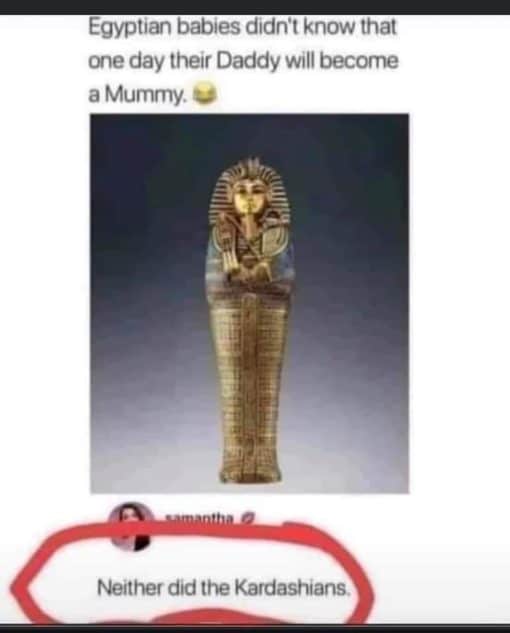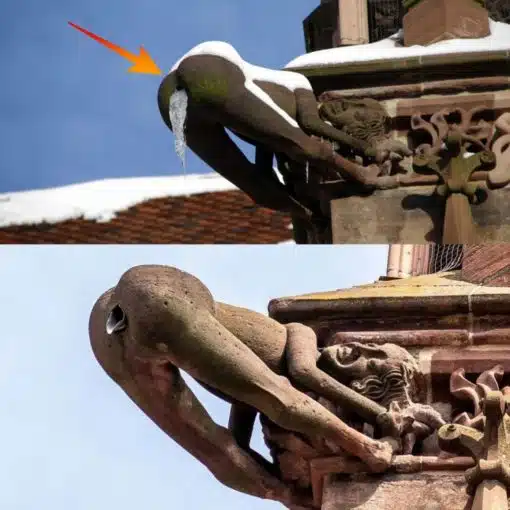Top 50 Archeological Memes
RANKING FOR BEST Archeological Meme
Welcome to my special corner of the internet, “Archeological Memes Ranked” on TopYouLar.com, where history and humor intertwine to dust off some of the funniest bones of our past. As the ultimate cyberspace curator for all things hilariously ancient, I’ve dedicated myself to showcasing the cream of the crop when it comes to archeological memes. With careful excavation and the discerning tastes of meme aficionados like you, I present a regularly updated roster of the top 50 archeological memes.
Here, amidst the ruins of the mundane, you’ll find a trove of treasures that make light of our quest to understand human history. Each meme has been carefully selected and ranked based on its popularity, hilarity, and how well it digs into the essence of archeology’s quirks and quandaries. From tongue-in-cheek takes on ancient artifacts to playful pokes at the painstaking process of excavation, my collection spans a wide array of humorous insights that resonate with both hardcore historians and casual enthusiasts alike.
What makes “Archeological Memes Ranked” truly unique is the dynamic nature of its rankings. Much like an archeological site that continues to reveal new secrets over time, this page evolves with the humor and pulse of the internet. Viewer votes play a crucial role in determining the positioning of each meme, ensuring that the list remains fresh, relevant, and reflective of what the community deems the most hilariously insightful content. So, whether you’re here to unearth a quick laugh, find inspiration for your next meme masterpiece, or simply indulge in a blend of history and humor, you’ve come to the right place. Dive into the past with me and explore the top 50 archeological memes, where ancient civilizations and modern wit meet to create timeless entertainment.

The image presented is a humorous take on archeological findings, depicting a human skeleton that has been accessorized with modern adornments. At first glance, the skeleton appears to be a typical scientific exhibit one might find in a museum, placed against a neutral-toned backdrop and set within what resembles an exhibition display case.
However, upon closer inspection, the skeleton is wearing oversized, round sunglasses that seem incongruous with its ancient appearance. The glasses rest comically atop the skull, presenting a stark contrast between the antiquity of the skeleton and the contemporary style of the eyewear.
To further the humor, the skeleton has been given a pair of puffy, pink lips positioned where the mouth would be. This addition is particularly absurd as skeletons are, by definition, void of soft tissues, making the presence of full, fleshy lips utterly fantastical and amusing.
The caption "Future archeological findings..." adds an element of satire to the image, suggesting a whimsical vision of the future where archeologists might excavate such peculiar artifacts. It plays on the idea that future generations could discover remnants from our time and possibly misinterpret them in outlandish ways, similar to the misplacements seen on the skeleton.
The humor in the image also stems from the human tendency to personify inanimate objects, lending them human characteristics to evoke familiarity or comedy. By dressing up the skeleton in this fashion, the image anthropomorphizes the remains, prompting viewers to attribute a playful personality Future archeological findings

The image depicts a humorous comparison between coins from different historical periods: ancient Greek, ancient Roman, and contemporary United States. At the top of the image, there is a caption that reads, "They just change the name of the company and its location." The joke implied here is the suggestion that the designs on these coins, separated by thousands of years and great geographical distances, are products of a single "company" that merely rebranded and relocated over time.
In the first row, we see two ancient coins labeled "Greek." The coin on the left features a profile portrait that appears to be of a Greek figure, possibly a god or a ruler. The coin on the right displays an image of a bird, which looks like a particular stylized eagle, common in Greek symbology. These coins are artifacts from a time when Greece was a cradle of Western civilization, famous for its art, philosophy, and political systems.
Below the Greek coins, the second row presents two coins labeled "Roman." The left coin again shows a profile portrait similar to the Greek style but is distinctly Roman, identifiable by the laurel wreath, a common symbol of victory and honor in ancient Rome. The coin on the right bears a detailed image of an eagle with outspread wings, a powerful Roman emblem representing strength and authority.
The third row shows a single coin labeled "United States." This coin appears to be a modern quarter, displaying a profile portrait that resembles the classical style and an eagle with outspread wings similar to Roman iconography. This incorporation of ancient symbols into U.S. currency signifies continuity and a connection to the ideals and aesthetics of ancient Western civilizations.
The humor of the image lies in the playful suggestion that there is an enduring, monolithic "company" that has been designing currency from ancient times to the present. This whimsical anthropomorphization of historical trends in coin design slyly hints at the idea of a timeless corporate entity that's been responsible for coin designs over millennia. It plays on the familiar modern concept of company rebranding and relocation, comically applied to a historical and cultural artifact.
Furthermore, the fact that the U.S. coin, which represents the most recent iteration of these design elements, is part of everyday life, while the Greek and Roman coins are mostly encountered in museums or as collectors' items, adds to the humor. It's amusing to think that the same "designer" who crafted objects of ancient prestige is also responsible for the change jangling in our pockets today. The image draws an amusing parallel that spans history, poking fun at the way certain motifs seem everlasting, whether they are part of deliberate cultural homage or simply coincidental resemblances. They just change the name of the company and it s location IG PROJECTKNOWLEDGE
They just change the name of the company and it s location IG PROJECTKNOWLEDGE

This image presents a humorous juxtaposition caused by a somewhat serendipitous natural event. In the photo, we can see a gargoyle protruding from what appears to be the side of a building, traditionally designed to act as a decorative rainspout. The gargoyle itself is sculpted to look like a creature in a rather dramatic pose, with its mouth wide open.
What adds humor to this scene is the icicle that has formed from the gargoyle’s mouth, giving the appearance that the gargoyle is either spewing out an icicle or has found itself impaled by one. The presence of snow on the roof and the clear blue sky in the background indicate that the weather has been cold enough for the icicle to form and maintain its shape.
The contrast between the intended function of the gargoyle—essentially a medieval drainage system—and its new, unintended role as a support for a naturally formed ice sculpture creates a visual pun. The gargoyle appears to be "frozen in the act" of pouring water, which now takes the form of a frozen spike. This unintended consequence of weather interacting with architecture lends itself to a playful interpretation.
The idea that an inert stone figure could engage in an act of physical comedy by "accidentally" snagging an icicle conjures anthropomorphic associations. Observers may find humor in the idea of a stone creature having a moment of slapstick misadventure, similar to a cartoon or silent film antic, such as a character accidentally slipping on a banana peel.
People might also find it funny because it is an unexpected sight. Gargoyles are conventionally seen as somewhat grotesque and sometimes even foreboding figures meant to ward off evil or convey messages through their expressive designs in medieval architecture. This "icy mishap," however, flips that notion on its head, rendering the gargoyle somewhat ridiculous and endearing as opposed to its original solemn or menacing intent.
Finally, the dispositional theory of humor - the idea that humor arises when there is a violation of expectations within a benign context - applies perfectly to this image. Onlookers don't expect a stone figure to interact with its environment in such a coincidentally appropriate way, and because there's no real harm in the formation of an icicle, the situation is benign and thus primed for a humorous reaction. The image captures a moment of playfulness that defies the normal seriousness associated with gothic architectural elements, making it a delightful visual treat that appeals to our sense of unexpected whimsy. There is no text in this image.

The image presented is of a meme that plays on words and contemporary cultural references for comedic effect. The main visual element of the image is a photograph of an Egyptian sarcophagus, typically associated with the mummies of ancient Egypt. Sarcophagi were often elaborately decorated with the likeness of the deceased and hieroglyphs, and this one is no exception, featuring the iconic headdress and stylized facial features that are familiar from Egyptian art.
Above the sarcophagus is a caption that reads, "Egyptian babies didn’t know that one day their Daddy will become a Mummy." This is a play on words where "Daddy" typically refers to a father, while "Mummy" is the term used for the preserved bodies of the deceased in ancient Egypt. The statement is humorous because it exploits the double meaning of "Mummy," alluding to the fact that children in ancient Egypt would not have foreseen their fathers becoming mummified.
Additionally, below the sarcophagus is a screenshot of a social media comment that adds another layer to the joke. It reads, "Neither did the Kardashians." This appears to be a reference to a well-known family in contemporary culture, whose surname coincides with the term "cardiac," related to the heart, creating a pun involving their name and the practice of mummification where organs, including the heart, might be handled or removed.
The humor in the comment's reference to the Kardashians may stem from the fact that it draws a parallel between the ancient ritual of preserving the dead and the public's perception of the family's concern with physical appearance and permanence. The joke hinges on the surprise factor and cultural relevance, as the Kardashians are often a topic of conversation and media coverage, and this remark connects them to the historical and macabre subject of mummification.
The additional humor could also be tied to ongoing discussions and jokes about the family's transformations and dramatic changes in their lives, particularly regarding their appearances and romantic relationships. The incongruity between these modern celebrity issues and the ancient practice of mummification generates a contrast that is found amusing.
The meme’s composition, the juxtaposition of ancient and modern elements, and the clever wordplay all contribute to why it might be funny to people. Such memes often go viral on social media because they combine historical knowledge with modern pop culture in a surprising or unconventional way, appealing to those with a penchant for irony or satire. Egyptian babies didn t know that one day their Daddy will become a Mummy Neither did the Kardashians
Egyptian babies didn t know that one day their Daddy will become a Mummy Neither did the Kardashians



